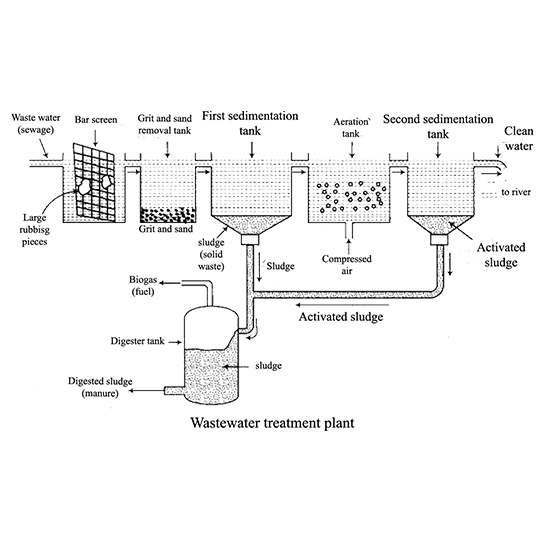Class 7 Science NCERT Exemplar Solutions Chapter 18 Wastewater Story
FAQs on NCERT Exemplar for Class 7 Science Solutions Chapter 18 Wastewater Story
1. How many questions are there in the Class 7 Science NCERT Exemplar for Chapter 18?
In NCERT exemplars, they typically have 25 questions present in them. These questions are divided into four sections.
Also for Chapter 18 WasteWater Story, there are around 25 questions, which are divided into four sections. First sections Multiple choice questions (MCQ) include 10 questions, 11-13 questions are in the Very Short Answer Questions part. Very Short Questions comprises questions from 14 to 22. The left 3 questions lie in the Large type.
The students get a better understanding of them by downloading the NCERT exemplar given above.
2. What is WasteWater?
The water which gets contaminated after being used in various activities, like Washing, bathing, mopping, or in manufacturing etc. It includes various substances such as human waste, Food scraps, soap lather, oils and various chemicals.
In our households, This includes water from sinks, showers, bathtubs, toilets, washing machines and dishwashers. Businesses and Industries also contribute a huge amount of pollutants as wastewater. The process of manufacturing various stuff requires an immense amount of water, that has to be cleaned.
3. What are some better housekeeping practices according to Chapter 18 Wastewater story?
We can minimise the waste produced by our homes, by indulging in these practices -
By not throwing used cooking oils and fats down the drains. As they can get harder and choke the pipes of the drains. So, always throw fats and oils into the dustbin
Solid waste also should only be thrown into the dustbin. If solid waste, such as used tea, leftover foods, cotton etc. end up in pipes or drains, they can choke these pipes.
4. What is the composition of Sewage?
Sewage is wastewater generally released from toilets, laundry, agriculture and other human activities. The composition of sewage is as follows-
Major impurities in sewage are Organic, which includes human and animal waste, urea, vegetable and fruit waste, etc.
Nitrates, Phosphates and metals are the Inorganic components of sewage.
Nitrogen and Phosphorus are the nutrients present in Sewage.
And also various microbes and bacteria, some help in decomposing of organic wastes and some cause water-borne diseases such as Cholera, dysentery, etc.
5. How to be an Active Citizen?
All humans have the responsibility to keep our environment clean. The persons who understand this responsibility and take actions accordingly as knowledgeable citizens can be considered as Active citizens.
Human activities are going to produce one kind or another of waste, which is a natural part of it. But as a knowledgeable active citizen, one can limit the quantity and types of waste. One can gain the knowledge of becoming an active citizen from chapter 18 of Class 7 science. After gaining the right information, one should spread this knowledge of well-being to others.

























